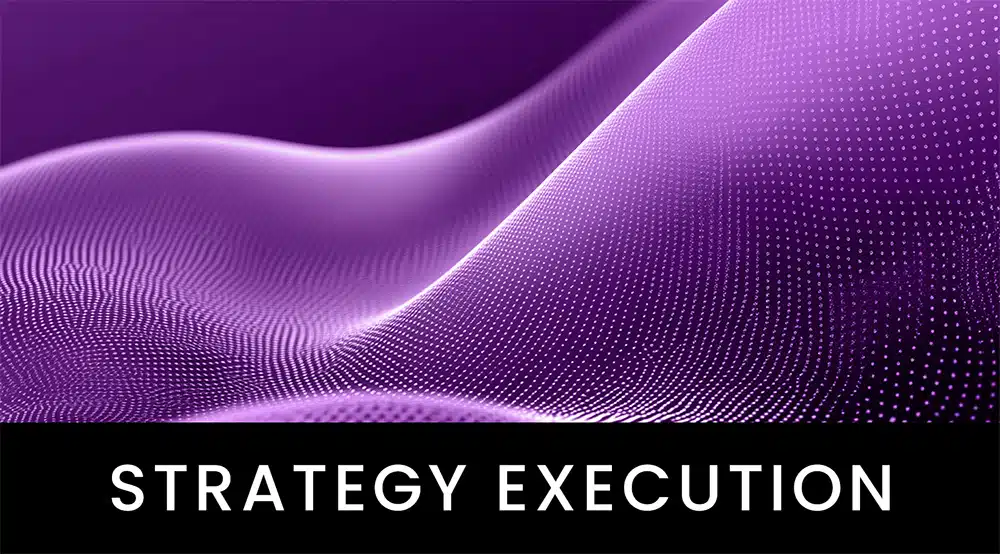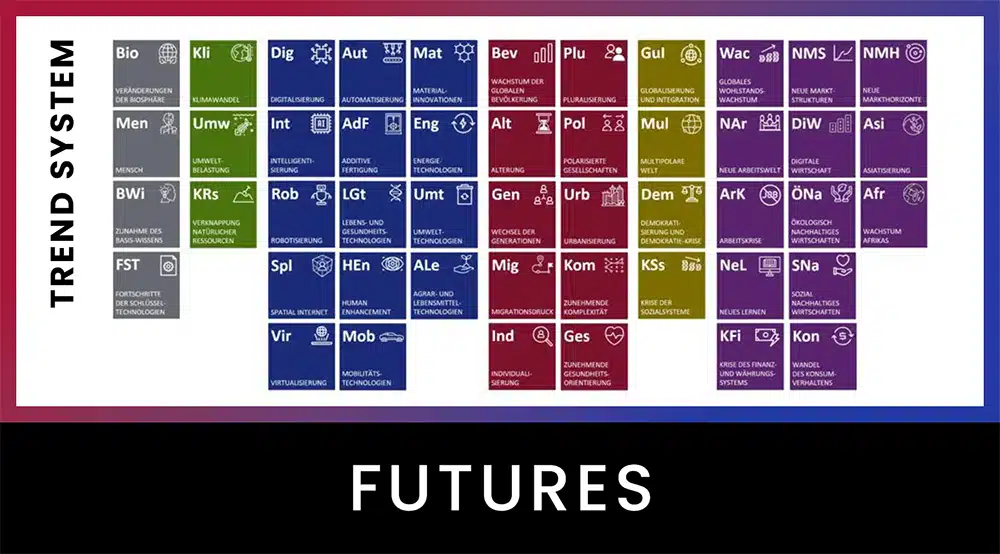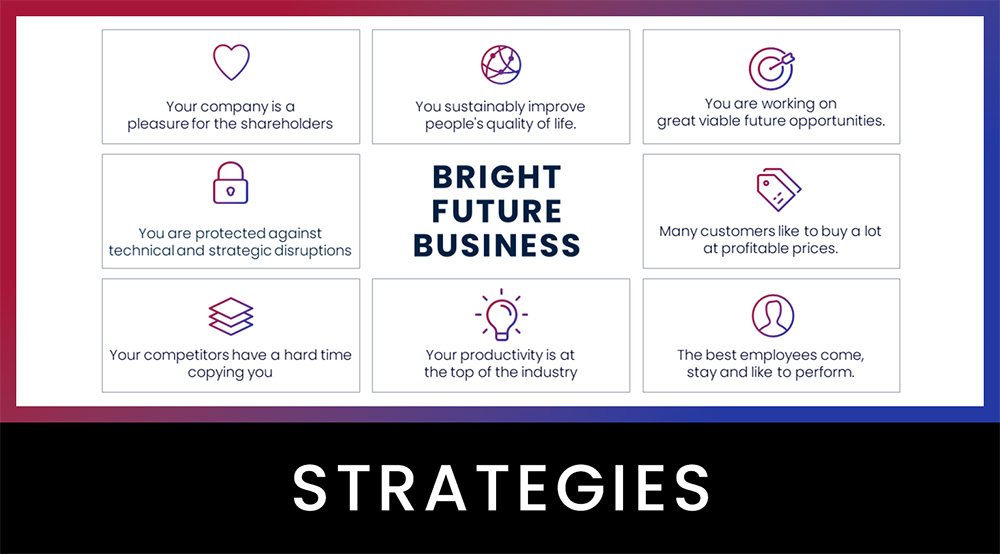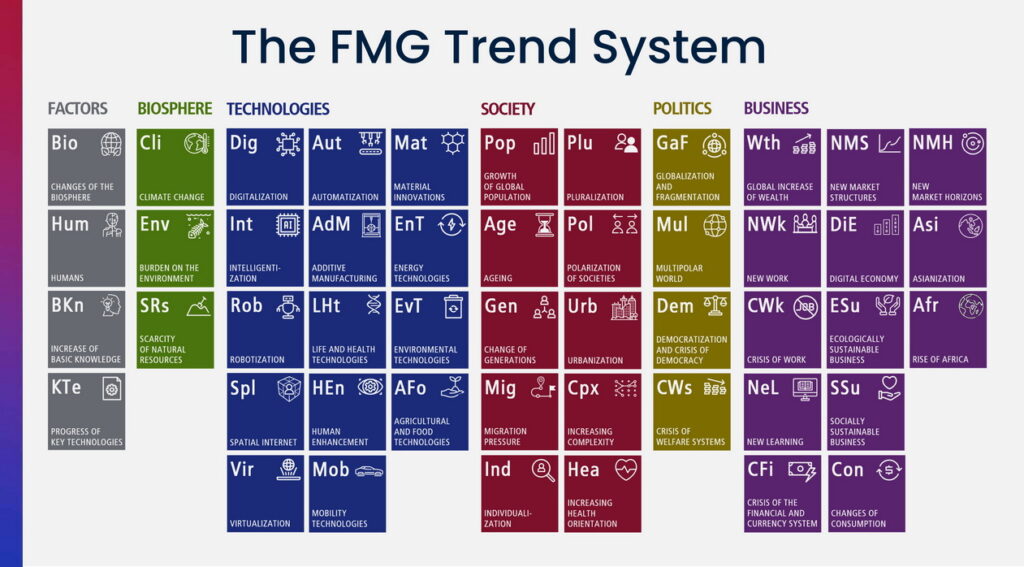10 steps on how to lead your team visionary into the future
In over 25 years of working with entrepreneurs to better align their businesses for the future, we have learned that even the best vision is of no use if you don’t communicate it effectively. And in such a way that it reaches the minds, hearts and hands of your employees and is consistently targeted in day-to-day business as an image of the future. But how can you successfully implement your vision?
Without implementation, your vision remains just a dream. Only if your employees understand, internalize and are committed to the corporate vision can it be effective. In theory, this sounds logical and simple, but in practice it is anything but trivial. Therefore, this is where the work really begins. There are 10 steps that can be learned from successful visionaries that massively increase the chances of success.
How to successfully implement your vision in 10 steps:
- Get out of your comfort zone
- Take ‘vision’ literally
- Communicate, communicate, communicate
- Stop anything that interferes with your mission and vision. Not supported
- Help your employees make their contribution to recognize
- Give your employees more freedom and Responsibility
- Promote positive thinking and action
- Designate a “proxy for your vision
- Be well organized
- Stay You stubborn
1. Leave your comfort zone!
Change experts and behavioral psychologists know that “if you want to change, it’s unlikely you’ll feel like taking the first steps.” Most people do not find it easy to leave the area defined by habits, the so-called comfort zone. This is as true for your employees as it is for you. What is familiar is easier. Without an attractive picture of the future, people always retreat to the familiar when faced with challenges, even if it is no longer future-proof. Familiar processes can be handled routinely, as if in one’s sleep. But staying in the comfort zone for too long harbors risks.
Your vision is certainly not based on the status quo. It is a look beyond the comfort zone. Communicate to your employees that this growth zone is an opportunity to grow with the company and in themselves by working toward the vision. Motivate them to leave their comfort zone with an attractive picture of the future. At the same time, the vision should be ambitious: in sight, but out of reach. Go ahead as a leader too, that means beyond your personal comfort zone! A first but crucial step on how to successfully implement your vision!
2. Take ‘vision’ literally: draw a picture of your desired future!
Offer your employees a credible image of an attractive future. You can best achieve this with a pictorial representation of your vision. Vision comes from “videre,” meaning to see. Be sure to present your vision in the form of pictures, graphics or videos. This has a visualization and a reminder function. The image is more concrete and prevents misunderstandings. In this way, the vision becomes much more conscious and effective in everyday life than pure text.
A picture of your vision also offers the same benefit as a template in a puzzle: orientation. Everyone recognizes whether and where their piece of the puzzle, i.e. their concrete contribution to achieving the vision, fits. Never let your employees do a puzzle without a template, because then everyone makes their own picture. Provide visual orientation and benefit from the effect of strong images.
3. Communicate, communicate, communicate!
Your employees can only successfully implement the corporate strategy if they have truly understood and internalized the company’s vision and strategy. For this to succeed, it is necessary to formulate the essential elements of the vision and strategy in such a way that they can be easily grasped and understood. Assume that hardly anyone will be willing to invest a lot of time to deal with details. Communication is key if you want to make your vision effective.
Use a variety of formats and channels to communicate. Repeat the core elements over and over to firmly establish the vision and strategy. Marketing experts say, “It’s only when your message hits you in the throat that it begins to resonate with customers.” Communicating the vision to your employees is no different. Communicate in an inspiring and convincing way. This way, you increase the number of co-creators and supporters who will work with you to implement your vision.
4. Stop everything that does not support your mission and vision!
Combine your forces and thus strengthen your penetrating power. Focus on the most effective starting point in each case and don’t waste your resources elsewhere. Focus and permanent concentration of forces (mind, time, money) are undisputed success factors. Don’t get distracted from your goals and keep your employees on track.
Focus requires saying no and literally “cutting away.” Make as many decisions against options, escapism, moment advantages, etc. as possible. Consistently counter inertia and counterforces by keeping the focus on your clear picture of the future. It smooths, focuses and harmonizes activities, from the management team to the individual employee. Also review your project, product and customer portfolio and clean it up where it doesn’t really fit your mission and vision.
5. Help your employees to recognize their contribution!
To achieve your vision, you need a goal-oriented strategy process that determines concrete actions and clear responsibilities for each individual. Strategy implementation should be top-down. Break down your vision in a strategy across the different levels (company -> divisions -> teams -> employees) to an individual level. In this way, every team and every employee immediately recognizes what their concrete contribution to the success of the vision looks like.
This cascading provides guidance on the extent to which a specific task or process pays into the ‘master plan’. Also use this bottom-up in the communication process to review strategy implementation results, align roadmaps across levels, or identify problems early. In this way, you also give your employees the opportunity for dialog and entrepreneurial co-design.
6. Give your employees more freedom and responsibility!
Freedom on the one hand and the assumption of responsibility on the other take the place of an authoritarian style of leadership characterized by command and obedience. This is the only way companies can achieve the agility necessary for success today – in relation to volatile markets and a highly dynamic competitive environment. The prerequisite is that the responsibility associated with freedom is actually accepted.
A strong leader is indispensable for this: Only when the vision is clear and concrete goals are agreed upon can you also give your employees the freedom to take responsibility. Detailed planning and permanent control must take a back seat. Establish a culture of trust where independent employees in self-organized teams pursue and implement your vision. Create free space for creativity and innovation – but with a clear common goal in mind!
7. Encourage positive thinking and action!
“Culture eats strategy for breakfast,” said Peter Drucker about the importance of corporate culture for business success. That’s right. A strategy, no matter how intelligent and sophisticated, has no chance of being implemented if the prevailing culture opposes it. Culture cannot be commanded. Culture can also be developed very slowly. But agreements can be reached, i.e., guidelines can be drawn up and compliance with them can be agreed upon.
Behavioral design is the lever to change a team’s culture. Encourage, support and reward positive thinking and agreed-upon action in all areas and with all the resources at your disposal. This is less about financial incentives and more about appreciation, recognition and prominent praise. Communicate success stories in house media. Value positive behavior change. Pay attention to those who are actively developing in the spirit of the vision. And: Live the values, norms and attitudes of your desired corporate culture!
8. Designate a “representative” for your vision
Once you have set a challenging vision for yourself and your company, the road becomes challenging. Necessary actions to achieve the vision are procrastinated, for example, citing the demands of day-to-day business. New ideas are pursued even though they do not fit the future direction. This will also be true for you as a leader. When customers call with special requests, problems arise with suppliers or an important project comes to a standstill, you too will always have the temptation to prioritize the urgent in the short term over the important in the long term. This makes it difficult for you to realize your vision.
You will have an easier time if you also have someone who represents the content and goals of your vision to you in a motivating and controlling way as well. A kind of proxy of your vision. As an entrepreneur, you are at the top and accountable to no one. By making a commitment to another person to stay true to the vision and achieve your goals, you increase your motivation. You can also give this person the authority to impose sanctions if strategic goals are neglected.
These can be, for example, penalties agreed in advance (from private assets) if the company’s own commitment is not met. Designate a commissioner for your vision and give him/her authority. In doing so, you also expand your own willpower. To your employees, of course, you yourself have this role.
9. Be well organized!
Not only is your vision a template for your employees, you are also a role model. As an entrepreneur or manager, you always have an example effect on your employees. Keep to your tasks and responsibilities as well. Deadlines, dates and goals should be binding for everyone – even those at the top. This sounds banal and self-evident, but it is not always the case.
Therefore, the following also applies to you and your managers: Get organized. Create a system that helps you implement your personal tasks and achieve your individual goals. Software and tools are not an end in themselves here. But electronic boards, shared task lists, or a digital tickler file for reunions can help keep things on track.
10. Be persistent!
Even if you have an attractive vision for the future of your company, getting there is no easy task. You can’t do that without perseverance. After all, your vision describes what your company wants to do to earn its money in five, ten, or even fifteen years. It is a marathon for which you need a long breath. It is not uncommon for the achievement of a vision to fail because people only work towards quick successes, but then lack energy and stamina for the entire route.
If you give up along the way, you’ve wasted time, energy, money and resources. You also lose credibility: if you call for the next marathon, fewer of your employees will be motivated to enter the starting line. Once you’ve decided on a longer-term goal, demonstrate perseverance. It’s worth it! Therefore: Be patient – and stay persistent!
X
Follow these links as well:
► The Future Strategy Program for SMEs
► Free video crash course THE FUTURE OF YOUR BUSINESS
► BUSINESS WARGAMING for robust business and future opportunities
► KEYNOTES by Pero Mićić for your employees and customers
Have a bright future!


































